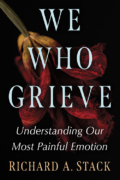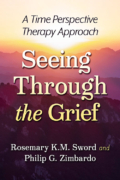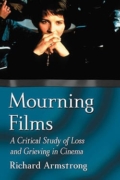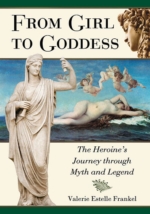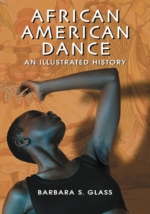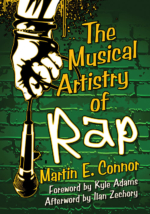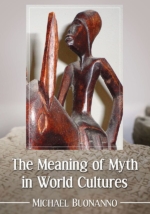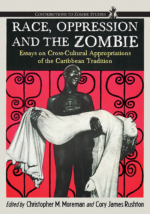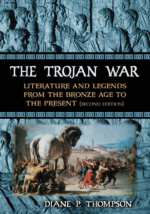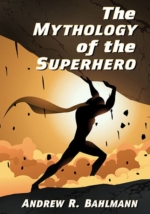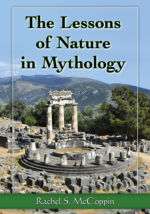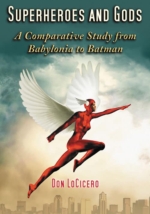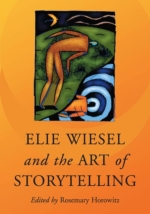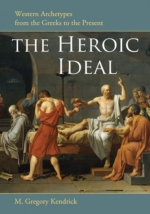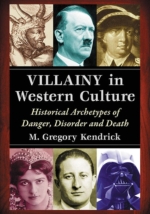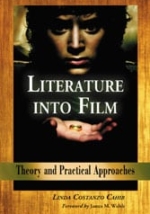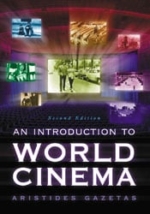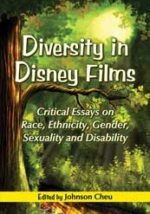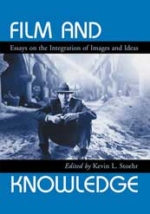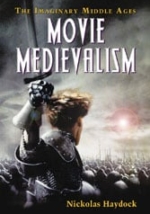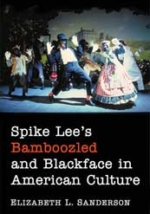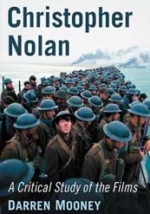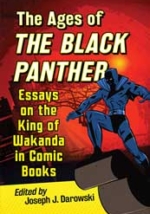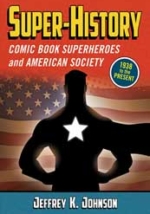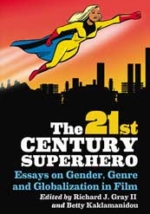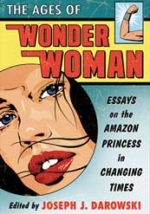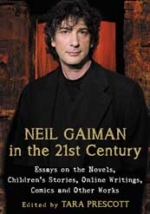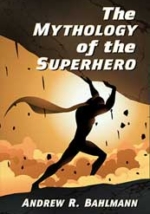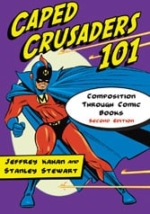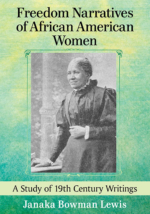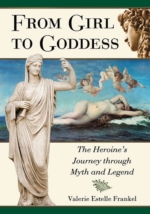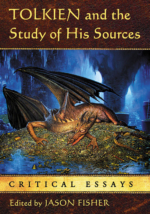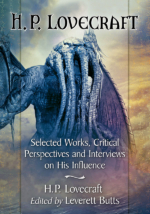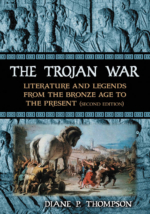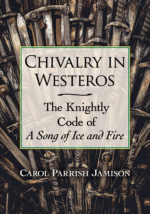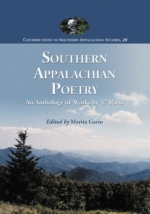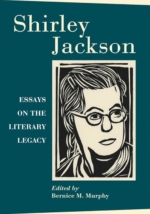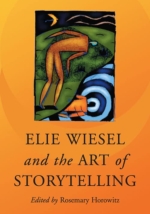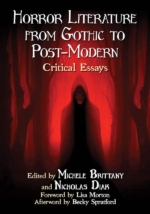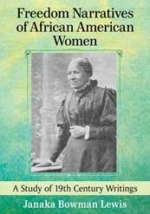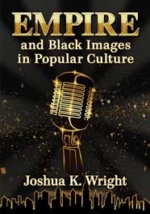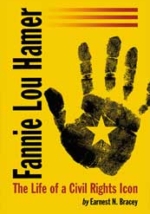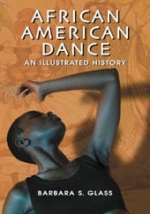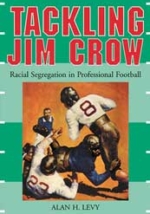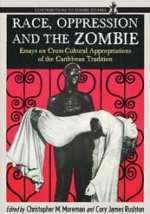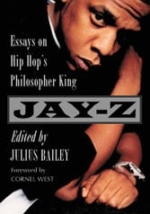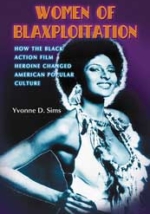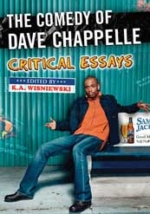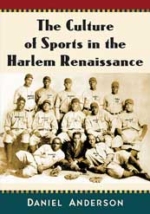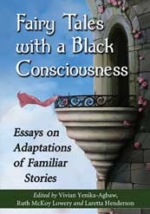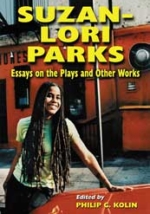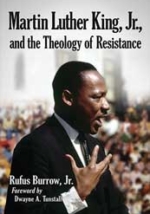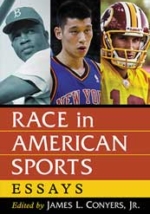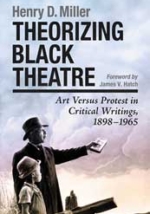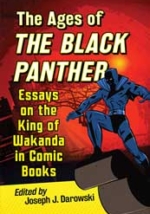We get it: someone in your household wants to bring in a tree while another hasn’t put away the Halloween decorations yet. We suggest using this liminal time to get started with your holiday shopping (and reading). Many of our readers look forward to our traditional post–Thanksgiving holiday sale to fill their shelves, nightstands and gift bags. This year, instead of waiting around for Black Friday, we’re opening up early access to you, our loyal readers and followers, as a way of saying “thank you!” for celebrating with us all year round. From now through Cyber Monday, November 28, get a Santa–sized 40% off ALL titles with coupon code HOLIDAY22! Don’t delay, because when early access ends, the discount will drop to the standard 25%. Happy reading!
Category: History
Afghanistan and International Studies Catalog
 Lasting almost 20 years, the war in Afghanistan was America’s longest. Read more about those who fought the war, and about the people of Afghanistan, in the books within our Afghanistan and international studies catalog.
Lasting almost 20 years, the war in Afghanistan was America’s longest. Read more about those who fought the war, and about the people of Afghanistan, in the books within our Afghanistan and international studies catalog.
New Chess Catalog and Sale
 McFarland has long served the chess scholar and collector, and our line of scholarly books about chess reflects our roots in more ways than one: chess was one of our earliest lines, and even today our chess books are often published in time-honored, cloth-covered library binding (so-named because it was once the standard for durable library books). Browse our chess catalog for new books and old favorites, and, through the end of August, get 25% off all chess books with coupon code CHESS25.
McFarland has long served the chess scholar and collector, and our line of scholarly books about chess reflects our roots in more ways than one: chess was one of our earliest lines, and even today our chess books are often published in time-honored, cloth-covered library binding (so-named because it was once the standard for durable library books). Browse our chess catalog for new books and old favorites, and, through the end of August, get 25% off all chess books with coupon code CHESS25.
Olympics Catalog and Sale
 In celebration of the 32nd Summer Olympiad games, we’re releasing a catalog covering all our Olympic-related books. The McFarland Olympic catalog includes reference works on previous games, as well as histories of popular Olympic sports, athlete biographies, sports-related sociologies and more. Now through August 15, get 25% off our Olympic catalog with coupon code TOKYO25 at checkout on the McFarland website.
In celebration of the 32nd Summer Olympiad games, we’re releasing a catalog covering all our Olympic-related books. The McFarland Olympic catalog includes reference works on previous games, as well as histories of popular Olympic sports, athlete biographies, sports-related sociologies and more. Now through August 15, get 25% off our Olympic catalog with coupon code TOKYO25 at checkout on the McFarland website.
Fall 2021 New Books Catalog Available Now
 Our Fall 2021 new books catalog is now available—click to see what our authors have in store for the coming months!
Our Fall 2021 new books catalog is now available—click to see what our authors have in store for the coming months!
Military History Sale
 Our extensive catalog of military history books now features more than 1,000 titles in print, and among them are many of our bestsellers. No matter your interests (or those of the history buff in your life), you’re sure to find a good fit. Through Memorial Day, May 31, get 25% off all military history titles with coupon code MILITARY25!
Our extensive catalog of military history books now features more than 1,000 titles in print, and among them are many of our bestsellers. No matter your interests (or those of the history buff in your life), you’re sure to find a good fit. Through Memorial Day, May 31, get 25% off all military history titles with coupon code MILITARY25!
Women’s Studies Sale and New Catalog
 Women made 2020 a banner year for diversity and inclusivity. In sports, representation on and off the field erupted with the leadership of Kim Ng, Sarah Fuller and Katie Sowers. Scientists Emmanuelle Charpentier and Jennifer A. Doudna jointly earned the Nobel Prize in Chemistry. And in politics, women like Cori Bush, Sarah McBride, Yvette Herrell and others were elected to ever-diversifying legislatures, while Kamala Harris ascended to the highest elected position a woman has yet to hold. To honor Women’s History Month and to nurture the path forward, we’re offering 20% off our catalog through March 31st with coupon code WOMEN20.
Women made 2020 a banner year for diversity and inclusivity. In sports, representation on and off the field erupted with the leadership of Kim Ng, Sarah Fuller and Katie Sowers. Scientists Emmanuelle Charpentier and Jennifer A. Doudna jointly earned the Nobel Prize in Chemistry. And in politics, women like Cori Bush, Sarah McBride, Yvette Herrell and others were elected to ever-diversifying legislatures, while Kamala Harris ascended to the highest elected position a woman has yet to hold. To honor Women’s History Month and to nurture the path forward, we’re offering 20% off our catalog through March 31st with coupon code WOMEN20.
BOOK REVIEWS: The People of the Sagas
Here are the latest book reviews for Icelanders in the Viking Age: The People of the Sagas by William R. Short.
• “Provides information on the daily lives, culture, history, and society of the Icelanders in a clear and well-structured fashion that invites and informs modern readers. The 13 chapters are concise, and clearly laid out sections allow readers to review specific themes or read the work as a whole. Using both literary and archaeological sources, Short presents a detailed, succinct, and informative overview of Icelanders of the saga age as well as the sagas themselves. Readers are enticed into further exploration of Viking–age Iceland with the inclusion of detailed chapter notes and recommendations for further readings. This useful introduction to the Viking age is an essential companion to the medieval narratives…. The author’s in-depth research makes this a compelling, informative addition to almost any collection dealing with the sagas or the Viking age. Highly recommended. General and academic collections, all levels.”—Choice
• “Informative…Short has done an excellent job…most interesting…I unhesitatingly recommend this book to anyone with even a shred of interest in the Viking era…faultless…tells a coherent story…this is a book stuffed full of interesting material for anyone interested in the sagas, the Viking age, the Icelandic Commonwealth, and early contact with the New World. Highly recommended”—Armed and Dangerous
• “A warning to readers. You may find you need to hide your copy of this book…chapters on pretty much all aspects of daily life…. You don’t need to be a specialist in anthropology or history to understand…illustrated with numerous black and white photographs of Iceland and Icelandic artifacts, drawings and maps…enjoyed it very much. You’ve got to hand it to McFarland as they publish some fascinating books”—Green Man Review
• “A perfect companion or an introduction to reading the sagas…very easy to read, and covers many topics in the life of the people in Iceland during those times…covers religion, laws, feuds, home life, and the settlement, among other topics…truly gives you an overview of what everyday life was like…[Short’s] research is flawless, and his sources are well-documented…bibliography is impressive…very well-indexed…entertaining, easy-to-read and very educational”—Lögberg-Heimskringla
• “Well-structured, easily understandable and practical…digs deep into a wide range of archaeological and literary sources…presents readers with a realistic account of life in the saga age…excellent…thorough and accurate…interesting…especially helpful”—Iceland Review
• “Riveting exploration…a solid addition”—Midwest Book Review
• “Fresh and interesting…a most readable book”—SMART: Studies in Medieval and Renaissance Teaching
• “Comprehensive but accessible history…. All aspects of society are covered including laws, conflict, domestic work, agriculture, gender roles, trade and production. Blending literature, legal codes, chronicles and archaeology and embellishing them with pictures, many of which he took himself. Short’s book is a perfect companion to the study of the Icelandic sagas”—Reference and Research Book News
Vikings Catalog and Sale
 On the threshold of winter, it is not untoward to turn one’s thoughts to hearty beards. So it is here at McFarland, and ours have specifically turned to Vikings and representations of medieval Nordic-ness in myth, literature and popular culture. We’ve collected all our related McFarland titles into this catalog, and you’ll find a full range of books covering topics such as the intellectual inspirations for Tolkien’s legendarium, the Vikings television series that successfully summoned their historical world, and insights into the people of the great Icelandic medieval sagas. If you have an interest in Norse mythology in heavy metal music, McFarland has a book for that, too! Through December 31, get 30% off these books with coupon code VIKINGS30.
On the threshold of winter, it is not untoward to turn one’s thoughts to hearty beards. So it is here at McFarland, and ours have specifically turned to Vikings and representations of medieval Nordic-ness in myth, literature and popular culture. We’ve collected all our related McFarland titles into this catalog, and you’ll find a full range of books covering topics such as the intellectual inspirations for Tolkien’s legendarium, the Vikings television series that successfully summoned their historical world, and insights into the people of the great Icelandic medieval sagas. If you have an interest in Norse mythology in heavy metal music, McFarland has a book for that, too! Through December 31, get 30% off these books with coupon code VIKINGS30.
Books About the Holidays Sale
 Even if you’re celebrating the holidays in “new and exciting” ways this year, there are still ways to celebrate holiday traditions—we suggest reading about them! Through Sunday, December 6, get 40% off books about holidays with code HOLIDAY40!
Even if you’re celebrating the holidays in “new and exciting” ways this year, there are still ways to celebrate holiday traditions—we suggest reading about them! Through Sunday, December 6, get 40% off books about holidays with code HOLIDAY40!
Presidents Sale
 We’re not here to scold you to vote, we’re here to give you some good reads about the history of the American presidents. Through Sunday, November 15, get 20% off all books about United States presidents with the coupon code VOTE20!
We’re not here to scold you to vote, we’re here to give you some good reads about the history of the American presidents. Through Sunday, November 15, get 20% off all books about United States presidents with the coupon code VOTE20!
Nursing Sale
 Over the course of the COVID-19 pandemic, health care workers have truly put their lives on the line in order to help save their patients. We are incredibly grateful for all health care workers and essential workers during this time. 2020 is also Florence Nightingale’s 200th birthday, making this year the “Year of the Nurse”; Nightingale was a statistician, social reformer, and the founder of modern nursing. In recognition of the Year of the Nurse, we are offering 20% off all nursing books through August 31, 2020, with coupon code NURSING20!
Over the course of the COVID-19 pandemic, health care workers have truly put their lives on the line in order to help save their patients. We are incredibly grateful for all health care workers and essential workers during this time. 2020 is also Florence Nightingale’s 200th birthday, making this year the “Year of the Nurse”; Nightingale was a statistician, social reformer, and the founder of modern nursing. In recognition of the Year of the Nurse, we are offering 20% off all nursing books through August 31, 2020, with coupon code NURSING20!
Fall 2020 New Titles Catalog Available Now
 Our fall New Titles catalog is now available, featuring 184 forthcoming books from our authors. Browse now!
Our fall New Titles catalog is now available, featuring 184 forthcoming books from our authors. Browse now!
New Exposit Books Catalog Now Available
 Our Exposit Books imprint is dedicated to publishing books about true crime, psychology, sexuality and more. For the latest and forthcoming Exposit titles, check out our brand new catalog!
Our Exposit Books imprint is dedicated to publishing books about true crime, psychology, sexuality and more. For the latest and forthcoming Exposit titles, check out our brand new catalog!
June Transportation Sale
 It’s June, gas prices are cheap, the highways are free of traffic, and holiday destinations are uncrowded. Let’s hit the road (in spirit, if not in deed)! Our automotive history line, including histories of marques famous and obscure, auto racing, biographies, reference works like J. Kelly Flory’s massive American Cars volumes, and much more, is complimented by many excellent works on locomotive, aviation, and maritime history; bicycles; and military transportation. This month, we’re offering ALL transportation titles at 40% off the list price with coupon code TRANSPORTATION40! Use this coupon code on our website through Sunday, June 28. Safe travels from your friends at McFarland!
It’s June, gas prices are cheap, the highways are free of traffic, and holiday destinations are uncrowded. Let’s hit the road (in spirit, if not in deed)! Our automotive history line, including histories of marques famous and obscure, auto racing, biographies, reference works like J. Kelly Flory’s massive American Cars volumes, and much more, is complimented by many excellent works on locomotive, aviation, and maritime history; bicycles; and military transportation. This month, we’re offering ALL transportation titles at 40% off the list price with coupon code TRANSPORTATION40! Use this coupon code on our website through Sunday, June 28. Safe travels from your friends at McFarland!
True Crime Sale
 April means we’re halfway to our next Halloween, and we think it’s a great time to celebrate all things macabre. This month, we’re offering readers 40% off our most riveting—and often downright frightening—books on real-life monsters and mayhem with our true crime sale. Through April 19th, use coupon code TRUECRIME40 on all of our reads about serial killers, unsolved crimes, famous robberies and more. Browse our true crime catalog here!
April means we’re halfway to our next Halloween, and we think it’s a great time to celebrate all things macabre. This month, we’re offering readers 40% off our most riveting—and often downright frightening—books on real-life monsters and mayhem with our true crime sale. Through April 19th, use coupon code TRUECRIME40 on all of our reads about serial killers, unsolved crimes, famous robberies and more. Browse our true crime catalog here!
New to Kindle, March 2020
The following titles are now available on Kindle:
|
A Century in Uniform: Military Women in American Films
|
|
African American Entertainers in Australia and New Zealand: A History, 1788–1941
|
|
Apocalypse TV: Essays on Society and Self at the End of the World
|
|
Apocalyptic Ecology in the Graphic Novel: Life and the Environment After Societal Collapse
|
|
Autogenic Training: A Mind-Body Approach to the Treatment of Chronic Pain Syndrome and Stress-Related Disorders, 3d ed.
|
|
Baseball in Europe: A Country by Country History, 2d ed.
|
|
Chasing the Bounty: The Voyages of the Pandora and Matavy
|
|
Colonels in Blue—Missouri and the Western States and Territories: A Civil War Biographical Dictionary
|
|
Electric Trucks: A History of Delivery Vehicles, Semis, Forklifts and Others
|
|
Ethics After Poststructuralism: A Critical Reader
|
|
Film History Through Trade Journal Art, 1916–1920
|
|
Final Battles of Patton’s Vanguard: The United States Army Fourth Armored Division, 1945–1946
|
|
George “Mooney” Gibson: Canadian Catcher for the Deadball Era Pirates
|
|
Girl of Steel: Essays on Television’s Supergirl and Fourth-Wave Feminism
|
|
Hollywood’s Hard-Luck Ladies: 23 Actresses Who Suffered Early Deaths, Accidents, Missteps, Illnesses and Tragedies
|
|
Italian Crime Fiction in the Era of the Anti-Mafia Movement
|
|
Japan’s Spy at Pearl Harbor: Memoir of an Imperial Navy Secret Agent
|
|
Joe Quigley, Alaska Pioneer: Beyond the Gold Rush
|
|
John Derek: Actor, Director, Photographer
|
|
Kenny Riley and Black Union Labor Power in the Port of Charleston
|
|
Managing Organizational Conflict
|
|
Nick McLean Behind the Camera: The Life and Works of a Hollywood Cinematographer
|
|
Parenting Through Pop Culture: Essays on Navigating Media with Children
|
|
Philip K. Dick: Essays of the Here and Now
|
|
Quaker Carpetbagger: J. Williams Thorne, Underground Railroad Host Turned North Carolina Politician
|
|
Rhode Island’s Civil War Dead: A Complete Roster
|
|
Rosalie Gardiner Jones and the Long March for Women’s Rights
|
|
Rosenblatt Stadium: Essays and Memories of Omaha’s Historic Ballpark, 1948–2012
|
|
Sacred and Mythological Animals: A Worldwide Taxonomy
|
|
Sailing Under John Paul Jones: The Memoir of Continental Navy Midshipman Nathaniel Fanning, 1778–1783
|
|
Section 27 and Freedman’s Village in Arlington National Cemetery: The African American History of America’s Most Hallowed Ground
|
|
Sicily on Screen: Essays on the Representation of the Island and Its Culture
|
|
Springsteen as Soundtrack: The Sound of the Boss in Film and Television
|
|
Taking Fire!: Memoir of an Aerial Scout in Vietnam
|
|
The 6th Michigan Volunteer Infantry in the Civil War: A History and Roster
|
|
The Civil War in the South Carolina Lowcountry: How a Confederate Artillery Battery and a Black Union Regiment Defined the War
|
|
The General Aviation Industry in America: A History, 2d ed.
|
|
The Man Who Made Babe Ruth: Brother Matthias of St. Mary’s School
|
|
The Showgirl Costume: An Illustrated History
|
|
The USS Swordfish: The World War II Patrols of the First American Submarine to Sink a Japanese Ship
|
|
The Women of City Point, Virginia, 1864–1865: Stories of Life and Work in the Union Occupation Headquarters
|
|
Themes in Latin American Cinema: A Critical Survey, 2d ed.
|
|
Understanding Nazi Ideology: The Genesis and Impact of a Political Faith
|
|
Virtual Tribe: Indigenous Identity in Social Media
|
|
Why the Axis Lost: An Analysis of Strategic Errors
|
2020 Women’s Studies Catalog Now Available
 Celebrate Women’s History Month with our new women’s studies catalog!
Celebrate Women’s History Month with our new women’s studies catalog!
2020 African American Studies Catalog Now Available
 Click here to browse our newest African American Studies catalog!
Click here to browse our newest African American Studies catalog!
2020 Super Bowl Sale
 Through Super Bowl Sunday, get 20% off ALL books about football with coupon code SUPERBOWL20!
Through Super Bowl Sunday, get 20% off ALL books about football with coupon code SUPERBOWL20!
Beer, Wine and Spirits Sale
 While many of our readers, authors and staff have an appreciation for the drinking of beer, practically as many also have a fondness for the culture of beer. Drink and culture converge at McFarland, where we have a small but growing line of books that look at the social and historical impact of beer, wine and spirits. Now through January 15, get 30% off of these books with coupon code BEER30. Grab a book, grab your beverage of choice, and kick back and enjoy two of life’s great pastimes! Furthermore, if you’re an author with an idea for a book about beer culture, tell us what you’ve got on tap at proposals@mcfarlandpub.com.
While many of our readers, authors and staff have an appreciation for the drinking of beer, practically as many also have a fondness for the culture of beer. Drink and culture converge at McFarland, where we have a small but growing line of books that look at the social and historical impact of beer, wine and spirits. Now through January 15, get 30% off of these books with coupon code BEER30. Grab a book, grab your beverage of choice, and kick back and enjoy two of life’s great pastimes! Furthermore, if you’re an author with an idea for a book about beer culture, tell us what you’ve got on tap at proposals@mcfarlandpub.com.
Books about the Holidays
 Check out our latest catalog of books about the holidays—Jolly Elves with Hearty Beards—and get 20% off books about the holidays thru January 6 with coupon code MIDWINTER19!
Check out our latest catalog of books about the holidays—Jolly Elves with Hearty Beards—and get 20% off books about the holidays thru January 6 with coupon code MIDWINTER19!
Also, our catalog-wide Black Friday / Cyber Monday sale continues through December 2. Use coupon code HOLIDAY19 to receive 20% off your entire purchase.
FLASH SALE: True Crime
 On Friday, November 8, get 30% off ALL true crime books with coupon code TRUECRIME30!
On Friday, November 8, get 30% off ALL true crime books with coupon code TRUECRIME30!
2019 Automotive History Catalog
 Browse our latest automotive history catalog—and, through October 31, get 20% off with coupon code AUTO19!
Browse our latest automotive history catalog—and, through October 31, get 20% off with coupon code AUTO19!
Six New Titles Recommended in October Issue of Choice
 Black Baseball, 1858–1900: A Comprehensive Record of the Teams, Players, Managers, Owners and Umpires
Black Baseball, 1858–1900: A Comprehensive Record of the Teams, Players, Managers, Owners and Umpires
“Brunson delivers an extraordinarily well researched guide…the level of detail and commitment to this research is impressive…ideal for accessing primary sources or teaching material…highly recommended.”
Fat Talk: A Feminist Perspective
“An engaging exploration…this book is an important read for women…recommended.”
The Polo Grounds: Essays and Memories of New York City’s Historic Ballpark, 1880–1963
“The essays flow smoothly from one topic to the next, making this an easy read from cover to cover. This book should be a welcome addition to most sports history or stadium architecture collections…recommended.”
Phinally!: The Phillies, the Royals and the 1980 Baseball Season That Almost Wasn’t
“The book is well researched and entertaining, and Daniel provides a behind-the-scenes story that transforms a straightforward historical account into an extremely detailed yet quick-moving read for die-hard baseball fans…recommended.”
Babe Ruth and the Creation of the Celebrity Athlete
“Heavily researched and detailed study…an important contribution to understanding Ruth’s prominent place in American cultural and marketing history…recommended.”
The Electric Car in America, 1890–1922: A Social History
“Segrave brings together a great deal of information about many short-lived electric car models, for which documentation is scant; this text therefore represents a substantial amount of archival research…recommended.”
American Folklore Society 2019
 McFarland is exhibiting at the annual conference of the American Folklore Society October 16-19 in Baltimore, Maryland. You are invited to meet with senior acquisitions editor Gary Mitchem. Schedule an appointment by emailing us in advance (gmitchem@mcfarlandpub.com) or stop by the McFarland booth in the exhibit room for a casual conversation with Gary.
McFarland is exhibiting at the annual conference of the American Folklore Society October 16-19 in Baltimore, Maryland. You are invited to meet with senior acquisitions editor Gary Mitchem. Schedule an appointment by emailing us in advance (gmitchem@mcfarlandpub.com) or stop by the McFarland booth in the exhibit room for a casual conversation with Gary.
Instructors are welcome to examine books for potential adoption, whether at the McFarland booth at AFS or electronically, by submitting a request via our web form.
Folklore
CONFERENCES: Upcoming MLA and PCA events
McFarland is exhibiting at a number of regional and national conferences in the coming months, and conferees are encouraged to take the opportunity to peruse our books and meet an editor. Schedule an appointment by emailing us in advance (Layla Milholen, Gary Mitchem, or Dré Person), or stop by the McFarland booth in the exhibit room for a casual conversation with an editor.
Popular Culture Association in the South Sept 26-28, Wilmington, NC, Layla Milholen
Association for the Study of African American Life and History Oct 3-5, Charleston, SC, Dré Person
Midwest Popular Culture Association Oct 10-13 Cincinnati, OH, Layla Milholen
American Folklore Society Oct 16-19, Baltimore, MD, Gary Mitchem
South Central Modern Language Association Oct 24-26, Little Rock, AR, Gary Mitchem
Mid-Atlantic Popular Culture Association Nov 7-9, 2019, Pittsburgh, PA, Gary Mitchem
Film and History Nov 13-17, Madison, WI, Dré Person
National Women’s Studies Association Nov 14-17, San Francisco, CA, Layla Milholen
South Atlantic Modern Language Association Nov 15–17, Atlanta, GA, Gary Mitchem
American Philosophical Association Jan 8-11, Philadelphia, PA, Dré Person
Modern Language Association Jan 9-12, Seattle, WA, Gary Mitchem
Cinema & Media Studies
Comics & Graphic Narratives
Literature
Association for the Study of African American Life and History 2019
 McFarland is exhibiting at the annual conference of the Association for the Study of African American Life and History October 3-5 in Charleston, South Carolina. You are invited to meet with editor Dré Person. Schedule an appointment by emailing us in advance (dperson@mcfarlandpub.com) or stop by the McFarland booth in the exhibit room for a casual conversation with Dré.
McFarland is exhibiting at the annual conference of the Association for the Study of African American Life and History October 3-5 in Charleston, South Carolina. You are invited to meet with editor Dré Person. Schedule an appointment by emailing us in advance (dperson@mcfarlandpub.com) or stop by the McFarland booth in the exhibit room for a casual conversation with Dré.
Instructors are welcome to examine books for potential adoption, whether at the McFarland booth at ASALH or electronically, by submitting a request via our web form.
September Journalism Books Sale
 These books discuss a wide range of topics about journalism, the only profession protected by the Constitution. Investigative reporting, social media, the First Amendment, ethical conundrums, history of the media, advertising, news entertainment, civics, writing, reporting and pop culture, among other topics, are covered here. Through September 30, get 20% off journalism books with coupon code JOURN19.
These books discuss a wide range of topics about journalism, the only profession protected by the Constitution. Investigative reporting, social media, the First Amendment, ethical conundrums, history of the media, advertising, news entertainment, civics, writing, reporting and pop culture, among other topics, are covered here. Through September 30, get 20% off journalism books with coupon code JOURN19.
Plants Go to War Reviewed in Booklist
 Plants Go to War: A Botanical History of World War II
Plants Go to War: A Botanical History of World War II
Judith Sumner
“In this impressively researched exploration, esteemed ethnobotanist Sumner takes a scholarly yet totally accessible approach to the myriad ways plant materials were critical to both Allied and Axis war efforts. With balanced attention to domestic sacrifices and ingenuity, Sumner’s astonishing discoveries make this a fascinating read for botany buffs and those steeped in military history.”—Booklist
New Vietnam Memoirs Catalog Available Now
 Browse our latest catalog of Vietnam War memoirs, and, through August 31, get 20% off your order with coupon code VIETNAM19!
Browse our latest catalog of Vietnam War memoirs, and, through August 31, get 20% off your order with coupon code VIETNAM19!
Fall 2019 New Books Catalog Available Now
 Our Fall 2019 new books catalog is now available—browse our authors’ new and forthcoming titles today!
Our Fall 2019 new books catalog is now available—browse our authors’ new and forthcoming titles today!
McFarland 40th Anniversary Sale
 We’re turning 40, and we’re celebrating with a special fortieth anniversary sale! Through June 30, get a 25% discount on ALL books when you use the code ANN2019. And if you’ll be in our area (Ashe County, North Carolina, in the beautiful Blue Ridge Mountains), we’d love to see you at our open house event on Friday, June 14. Thank you for supporting our first 40 years—we look forward to celebrating many more birthdays with you.
We’re turning 40, and we’re celebrating with a special fortieth anniversary sale! Through June 30, get a 25% discount on ALL books when you use the code ANN2019. And if you’ll be in our area (Ashe County, North Carolina, in the beautiful Blue Ridge Mountains), we’d love to see you at our open house event on Friday, June 14. Thank you for supporting our first 40 years—we look forward to celebrating many more birthdays with you.
McFarland Turns 40

On June 14, 2019, McFarland will celebrate its fortieth anniversary with an open house party. From noon to five, our campus at 960 Hwy 88 W, Jefferson, NC will be open to the public with finger food, conversation and tours available, and many of our authors will be in attendance. To stay up-t0-date with event information, follow our event page. Below is a brief company history, with personal thoughts, by founder and editor-in-chief Robert Franklin.
McFarland Publishers Now Forty Years Old
by Robert Franklin
McFarland’s history (founder, Robbie Franklin, me): My close friends Biff and Alicia Stickel were burned out special ed teachers in Connecticut, early 70’s. What to do? Back to the land! They (and their little daughter Maranatha Shone Stickel) drove south till they loved the vibe and the scenery and wound up living on Peak Road from 1972 through part of 1978 (and birthing Micah Stickel). Alicia played piano at the local Baptist church and they were cofounders of the Creston Co-op. I visited them in ’72 (instantly fell for the land and people, the forefinger car salute, the almost drinkable river) and again every year after, and when wife Cheryl Roberts came into my life in 1975, we visited. Soon I was bragging about Ashe County to everybody – “If your car breaks down, the very next person to come along will stop and ask if you need help.” I hope a few readers can recognize the Stickels’ name (he goes by Richard now; they live in Toronto). They are the reason McFarland was begun in Ashe County. We present band of publishers, about fifty in number, owe them great honor.
I did not learn till after we moved here in 1979 that my Revolutionary War ancestor Lieutenant Robert McFarland, after whupping the king at Kings Mountain, lived up here in the 1790s. He then went overmountain to become the first ever sheriff of Greene/Washington County, Tennessee. (I was born in Memphis.)
McFarland & Company, Inc., Publishers is our official name. Founded in April 1979 right here. I had been the executive editor of a smallish scholarly publisher in New Jersey; my mentor/boss/friend Eric Moon (a charismatic Brit) knew before I did it was time for me to go off on “my own” (very misleading words!). The local Ashe County newspaper was failing by 1978 and at first I thought, o.k., I’m an editor type, maybe I can start up a new one. Between summer and Christmas the local fellow David Desautels decided the same thing and very successfully started The Jefferson Times. We became friends and McFarland’s earliest two or three books (including a biography of Soviet leader Brezhnev) were typeset using off-hours time on that new newspaper’s equipment. Katy Zell Taylor was our first fulltime employee (Ashe Central H.S. yearbook editor!) and did a lot of typesetting and correcting. Dental Care in Society was our first published book, in 1980 (ask me some day).
After deciding up in New Jersey to stay with book (versus newspaper) publishing, I phoned the Jefferson Post Office in February 1979 to set up a box number mailing address – they said people had to apply in person. Whew! So I flew from Newark to Tri-Cities, Tennessee (what did I know?), rented a car, drove to Jefferson (hours!), filled out a form, got back in the car, drove back to Tri-Cities, and got back home not long before day was done.
A couple of months later, on April 1, 1979, Cheryl and I packed our former life stuff (including hundreds of books—heavy!) in a small U-Haul, attached it to our VW bug, and began to drive south, the Stickels’ Ashe County on our minds.
My ninth-grade homeroom friend (Toledo, Ohio), Mike Strand, had helped with some financial and emotional support and we stopped at his place in Maryland overnight. Armed with an Ashe return address, I had written several hundred letters (yes!) on a yellow pad on my knees in the front seat while Cheryl drove, and Mike arranged for a nearby university used-to-weird-hours thesis typist to type them all overnight; we mailed them April 2 and drove on. We were headed to my parents’ (retired librarians) house in Charlottesville, with me again writing several hundred short letters on my lap. We had arranged for a similar heroic overnight typing fest (the two days: 905 letters to all the authors I had addresses for, saying my former employer will take good care of you, they’re wonderful publishers—But if by any chance they turn you down for something, give us a shot!).
The U-Haul was too much for the Bug and our left rear wheel came OFF 20 miles north of Charlottesville—but stayed in the wheel well (having nowhere else to go), behaving violently. Definitely exciting (it was my stint at the wheel). We lost two or three days; I split logs for my parents’ fireplace.
In Ashe County finally, we scooped up some reply mail from authors. Already! And we soon secured a sweet farmhouse in Dillard Holler (landlord Jesse Dillard; Mom-figure Clyde Dillard; horse-plus-himself quarter-acre-garden plower Jones Dillard). The Dillard families taught us a great deal about what being “conservative” actually means. (One day Jesse turned up with several hundred fence rails he stored near “our” (his) house; no immediate need, but “I got ’em for 25¢ each.” They stayed stacked for years…) The birth of our sons Charles (in ’81), Nicholas (’85) and William (’89) certainly emphasized the Dillards’ lessons. (Jesse routinely tossed hay bales up into pickup trucks in his 80’s. Lemme be him!)
McFarland itself started out next to the H & R Block office, near the florist, in Jefferson, a small space but enough for our first couple of years. The Jefferson Post Office turned out, under our loyal friend Charles Caudill, to be one of our greatest early assets. He was so supportive as McF struggled through ignorance of mass mailings, foreign registered packages (we learned together!), “library rate” book mailings, etc. McFarland moved in 1981 or ’82 to the Mountain View shopping center between the towns and quickly expanded there. In 1982 we lucked out by having Rhonda Herman agree to join the tiny staff, doing all the “business” stuff while I coddled authors, edited manuscripts and coached the typesetters. High school senior Cynthia Campbell became a stalwart and sixteen year old Cherie Scott was a wow of a typesetter, along with Katy Taylor, on our new typesetting equipment. Within three years we were producing 40 or so new books a year (in 2018 the total was nearly 400).
Meanwhile, the people of Ashe County all around us showed interest, great surprise (“A Publisher in Ashe County?” read one huge Jefferson Times headline), and affection. Highly significant was Hal Colvard, repeatedly trusting us, at Northwestern bank, another wonderful early friend of McFar. We warmly greeted each other on Saturday mornings at the post office for many years after he retired.
By 1984 we’d moved to our present location, which became five buildings on both sides of the road. We’re technically inside Jefferson town limits. We took Mackey McDonald’s trim brick ranch house, whacked walls left and right, pushed out here, there… Years later we added a second floor – my joke is, the main building now has more roof lines than an Italian hill village.
We are, or were, a library-oriented scholarly and reference book publisher. (We’ve grown much more into a straight-to-people operation today but libraries are still a critical component of our efforts.) Two of our earliest works were Library Display Ideas by my sister Linda Franklin and Free Magazines for Libraries, by Adeline Mercer Smith: they were terrific sales successes. Another 1982 biggie was Anabolic Steroids and the Athlete by William M. Taylor, M.D. We hit that topic just as it exploded nationwide. One of the most memorable early works was Keep Watching the Skies! by Bill Warren (1982). This huge book expertly, humorously covers in amazing depth every American science fiction movie of the 1950s and a lot of Hollywood Big Names spoke highly of it in print. We were famous! (Well, the author was…)
McFarland was an early strong supporter of the local arts scene. (There are hundreds of paintings hanging in four of our buildings.) Cheryl Roberts and I founded the publication ARTS/DATES for the Arts Council in 1980 or 1981, and for more than a decade paid all its expenses as it grew grander and ever more useful. Loyal Jane Lonon (Arts Council head) wangled twice for us an N.C. Governor’s Business Award for the Arts and Humanities (go to Raleigh; shake hands; pose for photos; eat dinner).
I joined the strong, active Ashe County Little Theatre and played Dracula for them in 1981, sporting fangs crafted by the late Brett Summey, who became a good friend, now truly missed. Jane Lonon and I wowed the crowd in The King and I and Tom Fowler and I rolled them in the aisles in Greater Tuna. When I played Macbeth, the high school English teacher promised extra credit to student attendees.
McFarland’s output grew rapidly—by the 1990s we were producing hundreds of new titles each year and our staff had doubled, then tripled in size. Margie Turnmire had arrived in the mid–’80s, a beautiful soul and a very smart lady: director of finance and administration. In 1995 the Ashe County Chamber of Commerce honored us with a Business of the Year award (I believe we were the third such) and in 1998 The Wall Street Journal ran a feature article on us, showing that we are a bit unusual in our range of offerings. We have a commanding position in, for example, Vietnam combat memoirs, chess history, baseball (teams, eras, bios), automotive history and popular culture (film, TV, comics, literature…). We’ve done many reference books (though with Wiki-Google etc. now such works are uneconomical to produce); a Library Journal book of the year was local John Stewart’s African States and Rulers in 1989. Lots of Civil War, World War II, American/European/World history, literary criticism. Authors from all over the world. That part’s fun! As I write this we have published 7,800 titles.
We had busted out of our onsite warehouse and used the old Ashe County Jail on Buffalo Road for several years in the 80s! Ultimately we had to move our shipping operation into the building next to the Arts Council owned by Jim Reeves. On its outer wall facing the Arts Center we had Jack Young do the town’s first mural (now painted over): “Ashe County through the Ages.” Finally, Mike Herman built us an entirely new warehouse across the road from our main building in about 1990. Fourteen years later, then-vice-president Rhonda Herman (now president) moved the company onto firmer financial footing by arranging to install state-of-the-art printing equipment in that warehouse (we’d always used out-of-house printing firms).
Cheryl and I love Ashe County. We love the people. We love the trees, the river. (We came in first in the Mixed Expert class canoe race four or five years ago!) I even like the curves driving 23 miles to and fro our home to work (we live practically on the Tennessee line, up in the Flatwoods). The finger salute still works and the tire zing helps me think through business challenges. Our three boys, Charles, Nicky and William, also revere their place of birth. McFarland has about 50 employees, all of whom are exceptionally talented. When I got here to start the company, I truly had my pick of some of the best talent available anywhere, and I mean Anywhere. Our typesetters know every Hungarian or Swedish accent mark there is!
The local merchants have become business partners. Local artists have paintings hanging in our offices. The restaurants are great for business lunches. The weather—sublime (I learned to fell trees and the art of minimizing the lifting and stacking of logs our first year here); I like winter! Mike Herman built our house and the numerous renovations of our current space—impossible to imagine a better job. Stan Barker did some fabulous stone walls at our home. I feel both cozy and exhilarated just getting up in the morning! Ashe County, we’re for you!
McFarland is having an open house (snacks, drinks, tours) starting at noon on Friday, June 14th. We want to show our thanks to a community that has nurtured us for 40 years. Come one, come all!
Author Charles “Jerry” Juroe Receives France’s Legion of Honor
 Charles “Jerry” Juroe, who ran publicity on 14 James Bond movies, starting with Dr. No in 1962, will be awarded France’s prestigious Legion of Honor award for excellence in military conduct on June 6th, 2019 during D-Day Celebrations in Normandy. Juroe, 96, was part of the historic invasion on June 6th, 1944. After his WWII service, Juroe had a long career in the film industry, starting out as a publicist for Paramount Pictures, then serving as the personal publicist for stars like Bob Hope, Bing Crosby and Marilyn Monroe when she was filming The Prince And The Showgirl in England. Jerry was based in Europe for many years, working for every major studio. He worked with The Beatles on their UA movies, A Hard Day’s Night and Help!, but is best known for his association with the Bond films and his fruitful working relationship with legendary producer, Albert “Cubby” Broccoli. In 2018, he published his memoir, Bond, the Beatles and My Year with Marilyn: 50 Years as a Movie Marketing Man.
Charles “Jerry” Juroe, who ran publicity on 14 James Bond movies, starting with Dr. No in 1962, will be awarded France’s prestigious Legion of Honor award for excellence in military conduct on June 6th, 2019 during D-Day Celebrations in Normandy. Juroe, 96, was part of the historic invasion on June 6th, 1944. After his WWII service, Juroe had a long career in the film industry, starting out as a publicist for Paramount Pictures, then serving as the personal publicist for stars like Bob Hope, Bing Crosby and Marilyn Monroe when she was filming The Prince And The Showgirl in England. Jerry was based in Europe for many years, working for every major studio. He worked with The Beatles on their UA movies, A Hard Day’s Night and Help!, but is best known for his association with the Bond films and his fruitful working relationship with legendary producer, Albert “Cubby” Broccoli. In 2018, he published his memoir, Bond, the Beatles and My Year with Marilyn: 50 Years as a Movie Marketing Man.
Newly Published: Marie Marvingt, Fiancée of Danger
Marie Marvingt, Fiancée of Danger: First Female Bomber Pilot, World-Class Athlete and Inventor of the Air Ambulance
Rosalie Maggio
Marie Marvingt (1875–1973) set the world’s first women’s aviation records, won the only gold medal for outstanding performance in all sports, invented the airplane ambulance, was the first female bomber pilot in history, fought in World War I disguised as a man, took part in the Resistance of World War II, was the first to survive crossing the English Channel in a balloon, worked all her life as a journalist, spent years in North Africa and invented metal skis. Her life story was so unusually rich in exploits and accomplishments that some dismissed it as a hoax.
This biography explores the life of “the most incredible woman since Joan of Arc” and investigates the reasons she has been forgotten. Known as the “fiancée of danger,” she was the model for the silent film series The Perils of Pauline.
2019 Opening Day Baseball Sale
 Baseball is back, and so is our Opening Day sale! Through Sunday, March 31, get 25% off ALL baseball books with coupon code OpeningDay25!
Baseball is back, and so is our Opening Day sale! Through Sunday, March 31, get 25% off ALL baseball books with coupon code OpeningDay25!
Browse our most recent titles here. For our entire list of baseball titles, please visit our online catalog.
African American Studies Catalog and Sale
Biographies and Memoirs Catalog and Sale
 McFarland’s biographies and memoirs cover the fascinating life stories of both iconic personalities and quiet heroes. On sale now, browse hundreds of titles from history, sports, movies, music, science & technology, literature, military history, transportation and more. When you order direct from our website using the coupon code BIOGRAPHY, print editions of all biographies, autobiographies and memoirs are 20% off now through February 15.
McFarland’s biographies and memoirs cover the fascinating life stories of both iconic personalities and quiet heroes. On sale now, browse hundreds of titles from history, sports, movies, music, science & technology, literature, military history, transportation and more. When you order direct from our website using the coupon code BIOGRAPHY, print editions of all biographies, autobiographies and memoirs are 20% off now through February 15.
Three Books Named Choice Outstanding Academic Titles
 Congratulations to these Choice Outstanding Academic Titles!
Congratulations to these Choice Outstanding Academic Titles!
Winston Churchill, Myth and Reality: What He Actually Did and Said
Richard M. Langworth
Freedom Narratives of African American Women: A Study of 19th Century Writings
Janaka Bowman Lewis
The Postmodern Joy of Role-Playing Games: Agency, Ritual and Meaning in the Medium
René Reinhold Schallegger
Spring 2019 New Books Catalog Now Available
 Our spring 2019 new books catalog is now available—click here to browse our forthcoming titles!
Our spring 2019 new books catalog is now available—click here to browse our forthcoming titles!
Holiday 2018 Sale—Get 25% Off All Books!
 The holidays are a special time at McFarland—in addition to publishing scholarship, many of us also participate in the tree harvest, as Ashe County produces more Christmas trees than any other county in the United States. If you live in the Southeast, you may have a little bit of McFarland in your living room right now! This season, please consider putting some McFarland under the tree for the readers in your life. To make your holiday shopping easier, we’re offering 25% off of ALL books through the end of the year! On our website, use coupon code HOLIDAY18, or call us at 800-253-2187. For inspiration, browse our new catalog of of gift ideas for readers. Happy holidays from your friends at McFarland!
The holidays are a special time at McFarland—in addition to publishing scholarship, many of us also participate in the tree harvest, as Ashe County produces more Christmas trees than any other county in the United States. If you live in the Southeast, you may have a little bit of McFarland in your living room right now! This season, please consider putting some McFarland under the tree for the readers in your life. To make your holiday shopping easier, we’re offering 25% off of ALL books through the end of the year! On our website, use coupon code HOLIDAY18, or call us at 800-253-2187. For inspiration, browse our new catalog of of gift ideas for readers. Happy holidays from your friends at McFarland!
Four New Titles Reviewed in November Issue of Choice
 Ultra-Large Aircraft, 1940–1970: The Development of Guppy and Expanded Fuselage Transports
Ultra-Large Aircraft, 1940–1970: The Development of Guppy and Expanded Fuselage Transports
“This work is an important contribution to the history of aviation and a fine treatment of these enormous, ungainly looking airplanes. A worthwhile read for all interested in transport aircraft and the history of aviation…recommended.”
Tiger Stadium: Essays and Memories of Detroit’s Historic Ballpark, 1912–2009
“The editors of this text do an excellent job…a richly informative and entertaining resource for sports history collection…recommended.”
Exploring Our Dreams: The Science and the Potential for Self-Discovery
“Written in an easy to read, conversational tone, this book is easily accessible to the general reader…recommended.”
Early Bicycles and the Quest for Speed: A History, 1868–1903, 2d ed.
“Highly detailed…richly illustrated…[illustrations] provide a fascinating view of the late 19th century.”
Hispanic Heritage Month Discount
 Today marks the end of Hispanic Heritage Month, but the beginning of our sale on all Latino and Latin American studies titles! Through Sunday, October 21, get 20% off with the coupon code HERITAGE!
Today marks the end of Hispanic Heritage Month, but the beginning of our sale on all Latino and Latin American studies titles! Through Sunday, October 21, get 20% off with the coupon code HERITAGE!
Four New Titles Reviewed in October Issue of Choice
 Freedom Narratives of African American Women: A Study of 19th Century Writings
Freedom Narratives of African American Women: A Study of 19th Century Writings
“Compelling…crucially contributing to feminist recovery work and scholarship in African American studies, Freedom Narratives of African American Women is required reading for those interested in 19th-century America…essential.”
The Postmodern Joy of Role-Playing Games: Agency, Ritual and Meaning in the Medium
“Groundbreaking study…this volume is required reading for RPG and gaming scholars…essential.”
The American Soldier, 1866–1916: The Enlisted Man and the Transformation of the United States Army
“This is a rewarding study of enlisted men in the post–Civil War era…recommended.”
Organized Crime in the United States, 1865–1941
“Challenges widely accepted views…an interesting historical analysis…recommended.”
King Arthur Sales Starts Now
 What is known of the legendary King Arthur is mostly derived from folklore and literature. Though today, one is just as likely to have been introduced to King Arthur by a cartoon boy pulling a sword from a stone. You’ll find books covering all disciplines in our new King Arthur catalog.
What is known of the legendary King Arthur is mostly derived from folklore and literature. Though today, one is just as likely to have been introduced to King Arthur by a cartoon boy pulling a sword from a stone. You’ll find books covering all disciplines in our new King Arthur catalog. Four Titles Reviewed in September Issue of Choice
 Four new titles are reviewed in the September issue of Choice!
Four new titles are reviewed in the September issue of Choice!
We Rise to Resist: Voices from a New Era in Women’s Political Action
“The volume serves not only as a springboard for classroom discussions but also as a unique documentary source for future generations. We Rise to Resist contextualizes third-wave feminism by highlighting the diversity of women’s experiences while offering a space for reflection and a call for political action…highly recommended.”
The Los Angeles Dodgers Encyclopedia
“Comprehensive…excellent…this is a well-conceived and concise compendium of all things related to this iconic baseball team and an invaluable reference for all libraries…highly recommended.”
Repeating and Multi-Fire Weapons: A History from the Zhuge Crossbow Through the AK-47
“Well illustrated with photographs and diagrams and including a glossary and brief bibliography, this is a thorough treatment the topic and useful for those interested in military history…recommended.”
World Epidemics: A Cultural Chronology of Disease from Prehistory to the Era of Zika, 2d ed.
“Engagingly written…this accessible volume is well suited for popular collections and public libraries…recommended.”
Four New Titles Reviewed in August Issue of Choice
 Four new titles are reviewed in the August issue of Choice!
Four new titles are reviewed in the August issue of Choice!
The Mistaken History of the Korean War: What We Got Wrong Then and Now
“Few can challenge [Edwards’] passion in defense of the men he represents. Anyone wanting to comprehend the meaning of the Korean War for Americans cannot go wrong with this book. Essential.”
Motor City Champs: Mickey Cochrane and the 1934–1935 Detroit Tigers
“This book serves as an excellent introduction to the business and financial aspects of professional baseball teams in the 1930s…an engaging and informative read…recommended.”
Protecting the Home Front: Women in Civil Defense in the Early Cold War
“Recommended.”
The Californios: A History, 1769–1890
“Recommended.”
Transportation Sale—Final Day!
 Today is the last day to take advantage of our huge sale on transportation books! Use TRANSPORT25 now for 25% off ALL transportation titles!
Today is the last day to take advantage of our huge sale on transportation books! Use TRANSPORT25 now for 25% off ALL transportation titles!
July Transportation Sale: Get 25% off ALL Transportation Titles
 Some of you may share a guilty failing of our editors. When they receive proposals and manuscripts, while reading about almost any car–learning how it took shape, its quirks and qualities, how it changed over the production run–desire starts to sprout. Previously ignored vehicles (and even disliked vehicles) show their hidden appeal. On more than one occasion, an editor has looked at ads and undertaken calculations (financial, emotional, marital) for said cars.
Some of you may share a guilty failing of our editors. When they receive proposals and manuscripts, while reading about almost any car–learning how it took shape, its quirks and qualities, how it changed over the production run–desire starts to sprout. Previously ignored vehicles (and even disliked vehicles) show their hidden appeal. On more than one occasion, an editor has looked at ads and undertaken calculations (financial, emotional, marital) for said cars.Four New Titles Reviewed in Choice
Four new titles are reviewed in the July issue of Choice!
Scenes from an Automotive Wonderland: Remarkable Cars Spotted in Postwar Europe
“Any car spotter will enjoy this book, and may find a 26 horsepower favorite. The book is presented in a pleasant, easily readable format and contains a useful index and excellent bibliography… recommended.”
Women in the American Revolution
“effective… enriches the breadth of scholarship published on this topic… Wike’s multicultural net captures the multifaceted roles of women… recommended.”
The First 50 Super Bowls: How Football’s Championships Were Won
“This readable book will no doubt be enjoyed by his intended audience of football and sports fans… recommended.”
Henry Green: Havoc in the House of Fiction
“Nuanced… one leaves this study with a thorough knowledge of Green’s oeuvre and full insight into his mastery of high modernism… recommended.”
Two New Titles Reviewed in Booklist
 The Women of Orphan Black: Faces of the Feminist Spectrum
The Women of Orphan Black: Faces of the Feminist Spectrum
Valerie Estelle Frankel
“Frankel takes a deep dive into the sci-fi cult hit Orphan Black…explor[es] how the show challenged female stereotypes and the often-limiting categories women are put into on screen by creating female characters who were radically different despite having the same DNA…examines each character in depth…Frankel also illuminates the science at the heart of the show, along with the many literary allusions referenced each season…smart analysis”
Magic in Britain: A History of Medieval and Earlier Practices
Robin Melrose
“The author allows the reader to see how the relationship between magic and the church changed over time…a collection of fascinating stories about people, places, and practices”
Fall 2018 New Books Catalog Available Now
 Our Fall 2018 catalog is now available—click here to see our authors’ forthcoming books!
Our Fall 2018 catalog is now available—click here to see our authors’ forthcoming books!
Pride Month LGBTQ Studies Sale
 Celebrate Pride Month with a good book—through the end of June, get 20% off ALL LGBTQ studies titles with the coupon code PRIDE18!
Celebrate Pride Month with a good book—through the end of June, get 20% off ALL LGBTQ studies titles with the coupon code PRIDE18!
Military History Summer Sale
June has arrived, and with it McFarland’s military history sale. Whether you’re a military scholar, armchair historian, veteran, genealogist, or general reader interested in gripping nonfiction, now is the time to save. When you order direct from our website using the coupon code MILITARY25, print editions of all military history books are 25% off June 1 through June 15. Best of luck to all with your summer reading lists!
Newly Published: Shocking and Sensational
Shocking and Sensational: The Stories Behind Famous True Crime and Scandal Books
Julian Upton
Already part of a genre known for generating controversy, some true crime and scandal books have wielded a particular power to unsettle readers, provoke authorities and renew interest in a case. The reactions to such literature have been as contentious as the books themselves, clouding the “truth” with myths and inaccuracies.
From high-profile publishing sensations such as Ten Rillington Place, Fatal Vision and Mommie Dearestto the wealth of writing on the JFK assassination, the death of Marilyn Monroe and the Black Dahlia murder, this book delves into that hard copy era when crime and scandal books had a cultural impact beyond the genre’s film and TV documentaries, fueling outcries that sometimes matched the notoriety of the cases they discussed and leaving legacies that still resonate today.
Newly Published: The 96th Pennsylvania Volunteers in the Civil War
The 96th Pennsylvania Volunteers in the Civil War
David A. Ward
The 96th Pennsylvania Volunteers infantry regiment was formed in 1861—its ranks filled by nearly 1,200 Irish and German immigrants from Schuylkill County responding to Lincoln’s call for troops. The men saw action for three years with the Army of the Potomac’s VI Corps, participating in engagements at Gaines’ Mill, Crampton’s Gap, Salem Church and Spotsylvania. Drawing on letters, diaries, memoirs and other accounts, this comprehensive history documents their combat service from the point of view of the rank-and-file soldier, along with their views on the war, slavery, emancipation and politics.
Newly Published: A Poisoned Life
A Poisoned Life: Florence Chandler Maybrick, the First American Woman Sentenced to Death in England
Richard Jay Hutto
Florence Maybrick was the first American woman to be sentenced to death in England—for murdering her husband, a crime she almost certainly did not commit. Her 1889 trial was presided over by an openly misogynist judge who was later declared incompetent and died in an asylum. Hours before Maybrick was to be hanged, Queen Victoria reluctantly commuted her sentence to life in prison—in her opinion a woman who would commit adultery, as Maybrick had admitted, would also kill her husband.
Her children were taken from her; she never saw them again. Her mother worked for years to clear her name, enlisting the president of the United States and successive ambassadors, including Robert Todd Lincoln. Decades later, a gruesome diary was discovered that made Maybrick’s husband a prime Jack the Ripper suspect.
Newly Published: Celtic Cosmology and the Otherworld
Celtic Cosmology and the Otherworld: Mythic Origins, Sovereignty and Liminality
Sharon Paice MacLeod
Despite censorship and revision by Christian redactors, the early medieval manuscripts of Ireland and Britain contain tantalizing clues to the cosmology, religion and mythology of native Celtic cultures. Focusing on the latest research and translations, the author provides fresh insight into the indigenous beliefs and practices of the Iron Age inhabitants of the British Isles. Chapters cover a broad range of topics, including creation and cosmogony, the deities of the Gaels, feminine power in early Irish sources, and priestesses and magical rites.
Newly Published: The Moulton Bicycle
The Moulton Bicycle: A History of the Innovative Compact Design
Bruce D. Epperson
In 1963, British inventor Alex Moulton (1920–2012) introduced an innovative compact bicycle. Architectural Review editor Reyner Banham predicted it would give rise to “a new class of cyclists,” young urbanites riding by choice, not necessity. Forced to sell his firm in 1967, Moulton returned in the 1980s with an even more radical model, the AM—his acclaim among technology and design historians is largely due to Banham’s writings.
The AM’s price tag (some models cost many thousands of dollars) has inspired tech-savvy cyclists to create “hot rod” compact bikes from Moulton-inspired “shopper” cycles of the 1970s—a trend also foreseen by Banham, who considered hot rod culture “folk art of the mechanical era.”
The author traces the intertwined lives of two unusually creative men who had an extraordinary impact on each others’ careers, despite having met only a few times.
Newly Published: Terrorism Worldwide, 2017
Terrorism Worldwide, 2017
Edward Mickolus
This fourth comprehensive study of international terrorist attacks covers 2017, during which the Islamic State suffered continued reversals yet retained its status as the most active, well-financed and well-armed terrorist group worldwide. Organized by region and country, the study covers domestic and international incidents around the world, outlining significant trends. The author offers several indicators of what to watch in the coming years. The single-year format allows readers access to the most up-to-date information on terrorism, while geographic focus more easily facilitates regional comparison.
Newly Published: The Wreck of the San Francisco
The Wreck of the San Francisco: Disaster and Aftermath in the Great Hurricane of December 1853
John Stewart
On December 22, 1853, a new steamship left New York on its maiden voyage. The San Francisco—perhaps the finest ocean-going vessel of its time—had been chartered by the U.S. Government to transport the Third Artillery to the Pacific Coast.
Two days out, the ship ran into one of the great hurricanes of maritime history. Sails and stacks were blown away, the engine was wrecked and scores of people were washed overboard, as the men frantically worked the pumps to keep afloat. A few days later, cholera broke out.
After two weeks adrift, the survivors were rescued by three ships. The nightmare wasn’t over. Two of the vessels, damaged by the storm, were no position to take on passengers. Provisions ran out. Fighting thirst, starvation, disease and mutiny, they barely made it back to land. Then came the aftermath—accusations, denials, revelations of government ineptitude and negligence, and a cover-up.
Newly Published: Lewis Hine
Lewis Hine: Photographer and American Progressive
Timothy J. Duerden
Nearly 80 years after his death, Lewis Hine’s name is revered in the world of photography and practically synonymous with the labor reforms of the Progressive Era. His body of work—much of it a century old or more—remains vital as both aesthetic statement and social document.
Drawing on a range of sources, including information from surviving family members, this first full-length illustrated biography presents a detailed and personal portrait of the sociologist and photographer whose haunting images of children at work in cotton mills and coal mines sparked the movement to end child labor, culminating with the Fair Labor Standards Act of 1938. There are 62 of his penetrating photographs included.
Newly Published: The Public Artscape of New Haven
The Public Artscape of New Haven: Themes in the Creation of a City Image
Laura A. Macaluso
There are nearly 500 public works of art throughout New Haven, Connecticut—a city of 17 square miles with 130,000 residents. While other historic East Coast cities—Philadelphia, Providence, Boston—have been the subjects of book-length studies on the function and meaning of public art, New Haven (founded 1638) has been largely ignored. This comprehensive analysis provides an overview of the city’s public art policy, programs and preservation, and explores its two centuries of public art installations, monuments and memorials in a range of contexts.
Newly Published: “Masquerading in Male Attire”
“Masquerading in Male Attire”: Women Passing as Men in America, 1844–1920
Kerry Segrave
Historically, American women have dressed as men for a number of reasons—to enter the military, to travel freely, to commit a criminal act, to marry other women—but most often to secure employment. During the mid–1800s and early 1900s, most jobs were barred to women, and those that were available to both sexes paid women far less.
This book profiles both women who tried to pass as men and were caught—and even arrested—and those who successfully masqueraded for years. Whatever their motives, all took part in a common rebellion against an economic and social system that openly discriminated against them.
Newly Published: “Don’t tell father I have been shot at”
“Don’t tell father I have been shot at”: The Civil War Letters of Captain George N. Bliss, First Rhode Island Cavalry
George N. Bliss
Captain George N. Bliss of the First Rhode Island Cavalry survived some 27 actions during the Civil War. Midway through the war, he served nine months at a conscript training camp in Connecticut, where he sat on several courts-martial. In September 1864, in a skirmish at Waynesboro, Virginia, he single-handedly charged into the 4th Virginia “Black Horse” Cavalry. Badly injured and taken prisoner, he was consigned to the notorious Libby Prison in Richmond.
A colorful correspondent, Bliss detailed his experiences in letters to a close friend and sent dispatches to a Providence newspaper. His candid writings are rich with details of the war and his own opinions. The editors describe how, following the war, Bliss sought out the Confederates who almost killed him and formed friendships with them that lasted for decades.
Newly Published: Ultra-Large Aircraft, 1940–1970
Ultra-Large Aircraft, 1940–1970: The Development of Guppy and Expanded Fuselage Transports
William Patrick Dean
In 1962, a unique transport aircraft was built from the parts of 27 Boeing B-377 airliners to provide NASA a means of transporting rocket boosters. With an interior the size of a gymnasium, “The Pregnant Guppy” was the first of six enormous cargo planes built by Aero Spacelines and two built by Union de Transport Aeriens. More than half a century later, the last Super Guppy is still in active service with NASA and the design concept has been applied to next-generation transports.
This comprehensive history of expanded fuselage aircraft begins in the 1940s with the military’s need for a long-range transport. The author examines the development of competing designs by Boeing, Convair and Douglas, and the many challenges and catastrophic failures. Behind-the-scenes maneuvers of financiers, corporate raiders, mobsters and other nefarious characters provide an inside look at aviation development from the drawing board to the scrap yard.
Newly Published: The 758th Tank Battalion in World War II
The 758th Tank Battalion in World War II: The U.S. Army’s First All African American Tank Unit
Joe Wilson, Jr.
In 1941, the U.S. Army activated the 758th Tank Battalion, the first all-black armored unit. By December 1944 they were fighting the Axis in Northern Italy, from the Ligurian Sea through the Po Valley and into the Apennine Mountains, where they helped breach the Gothic Line—the Germans’ last major defensive line of the Italian Campaign.
After the war the 758th was deactivated but was reformed as the 64th Tank Battalion, keeping their distinguished insignia, a tusked elephant head over the motto “We Pierce.” They entered the Korean War still segregated but returned fully integrated (though discrimination continued internally). Through the years, they fought with almost every American tank—the Stuart, the Sherman, the Pershing, the Patton and today’s Abrams.
Victorious over two fascist (and racist) regimes, many black servicemen returned home to what they hoped would be a more tolerant nation. Most were bitterly disappointed—segregation was still the law of the land. For many, disappointment became a determination to fight discrimination with the same resolve that had defeated the Axis.
Newly Published: “Get the hell off this ship!”
“Get the hell off this ship!”: Memoir of a USS Liscome Bay Survivor in World War II
James Claude Beasley
James Claude Beasley was a typical American teenager in the 1940s—a child of the Great Depression with an abiding commitment to family and country. With the outbreak of World War II, he enlisted in the Navy at 18. His plainspoken, personal memoir recounts his three years of service (1942–1945), from his induction at Winston Salem, North Carolina, to the sinking of his ship, the escort carrier USS Liscome Bay, by a Japanese submarine, through the end of the conflict and his return to civilian life.
Weekly Deal: Cannabis Studies
 This week, get 20% off books about cannabis studies with the coupon code CBD!
This week, get 20% off books about cannabis studies with the coupon code CBD!
My Most-Wanted Marijuana Mom: Growing Up in a Smuggling Family
Newly Published: Death of an Altar Boy
Death of an Altar Boy: The Unsolved Murder of Danny Croteau and the Culture of Abuse in the Catholic Church
E.J. Fleming
The tragic death of 13-year-old Danny Croteau in 1972 faded from headlines and memories for 20 years until the Boston abuse scandal—a string of assaults taking place within the Catholic Church—exploded in the early 2000s. Despite numerous indications, including 40 claims of sexual misconduct with minors, pointing to him as Croteau’s killer, Reverend Richard R. Lavigne remains “innocent.”
Drawing on more than 10,000 pages of police and court findings and interviews with Danny’s friends and family, fellow abuse victims, and church officials, the author uncovers the truth—church complicity in the cover up and masking of priests involvement in a ring of abusive clergy—behind Croteau’s death and those who had a hand in it.
Newly Published: Chasing Charlie
Chasing Charlie: A Force Recon Marine in Vietnam
Richard Fleming
Richard Fleming served as a scout with the elite U.S. Marine 1st Force Reconnaissance Company during the bloodiest years of the Vietnam War. Dropped deep into enemy territory, Recon relied on stealth and surprise to complete their mission—providing intelligence on enemy positions, conducting limited raids and capturing prisoners. Fleming’s absorbing memoir recounts his transformation from idealistic recruit to cynical veteran as the war claimed the lives of his friends and the missions became ever more dangerous.
Newly Published: Melungeon Portraits
Melungeon Portraits: Exploring Kinship and Identity
Tamara L. Stachowicz
At a time when concepts of racial and ethnic identity increasingly define how we see ourselves and others, the ancestry of Melungeons—a Central Appalachian multi-racial group believed to be of Native American, African and European origins—remains controversial.
Who is Melungeon, how do we know and what does that mean? In a series of interviews with individuals who claim Melungeon heritage, the author finds common threads that point to shared history, appearance and values, and explores how we decide who we are and what kind of proof we need to do so.
Newly Published: Eminent Charlotteans
Eminent Charlotteans: Twelve Historical Profiles from North Carolina’s Queen City
Scott Syfert
Inspired by the 2010 “Spirit of Mecklenburg”—a bronze statue of Captain James Jack, “the South’s Paul Revere,” in downtown Charlotte, North Carolina—this history details the lives of 12 Charlotteans who made important contributions to the Queen City, from the early Colonial period to the 20th century. Subjects include Catawba Indian chief King Haigler, Founding Father Thomas Polk, freed slave Ishmael Titus, African American celebrity barber Thad Tate and North Carolina’s first woman physician, Annie Alexander.
Newly Published: Repeating and Multi-Fire Weapons
Repeating and Multi-Fire Weapons: A History from the Zhuge Crossbow Through the AK-47
Gerald Prenderghast
From the very earliest days of organized warfare, combatants have wanted to develop weapons with more firepower. This has inevitably led to a wide variety of repeating weapons, capable of a degree of sustained fire without reloading.
Based largely upon new research, this book explores the history of repeating and multi-fire weapons, beginning with the Chinese repeating crossbow in the 4th century BCE, and ending with the world’s most common firearm, the Kalashnikov AK-47. The author describes the potency of the machine gun in World War I, the development of the semiautomatic pistol and the role of the submachine gun in improving the effectiveness of the infantryman.
Newly Published: Roosevelt’s Revolt
Roosevelt’s Revolt: The 1912 Republican Convention and the Launch of the Bull Moose Party
John C. Skipper
The presidential election of 1912 was the only one whose candidates included an incumbent president, a former president and a future president. Theodore Roosevelt, in the Oval Office from 1901 to 1909, chose not to run again. When his former Secretary of War, William Howard Taft, took controversial actions as his successor, Roosevelt challenged him for the 1912 Republican nomination. Taft emerged as the nominee and Roosevelt ran as a third-party candidate on the Progressive (Bull Moose) ticket, causing a split in the GOP that allowed Democrat Woodrow Wilson to win the presidency.
The author examines the election in detail and traces the effects of Roosevelt’s actions on the Republican Party for decades. Appendices detail Republican primary results and all of the parties’ platforms and provide a summary of presidential assassinations and attempts.
We Rise to Resist Receives Starred Review in Booklist
 We Rise to Resist: Voices from a New Era in Women’s Political Action
We Rise to Resist: Voices from a New Era in Women’s Political Action
Edited by Paula vW. Dáil and Betty L. Wells
“For every person who railed in private or public protest against assaults on our nation’s cherished institutions, Dail’s anthology provides essential validation, affirming that dissent eventually works and that one’s outrage need not be in vain.”—Booklist (starred review)
Weekly Deal: Celtic Studies
 This week, celebrate St. Patrick’s Day with 20% off all Celtic studies books! Enter the coupon code CELTIC at checkout!
This week, celebrate St. Patrick’s Day with 20% off all Celtic studies books! Enter the coupon code CELTIC at checkout!
Celtic Astrology from the Druids to the Middle Ages
The Druids and King Arthur: A New View of Early Britain
Celtic Cosmology and the Other World: Mythic Origins, Sovereignty and Liminality
Two Books Reviewed in March Issue of Choice
 Library World Records, 3d ed.
Library World Records, 3d ed.
Godfrey Oswald
“Simply fun to browse…a tremendous resource for researchers and authors wishing to incorporate library facts and statistics into their work…recommended.”—Choice
The Morals of Monster Stories: Essays on Children’s Picture Book Messages
Edited by Leslie Ormandy
“A valuable resource for future analysis…recommended.”—Choice
Newly Published: The Mistaken History of the Korean War
The Mistaken History of the Korean War: What We Got Wrong Then and Now
Paul M. Edwards
Much of the history of the Korean War has been misinterpreted or obscured. Intense propaganda and limited press coverage during the war, coupled with vague objectives and an incomplete victory, resulted in a popular narrative of partial truth and factual omission. Battlefield stories—essentially true but often missing significant data—added an element of myth. Drawing on a range of sources, the author, a Korean War veteran, reexamines the war’s causes, costs and outcomes.
New Spring 2018 Catalog Available Now
 Our Spring 2018 New Books catalog is now available—click to see what our authors have in store for the new year!
Our Spring 2018 New Books catalog is now available—click to see what our authors have in store for the new year!
Weekly Deal: Philadelphia
 This week, celebrate the Eagles’ first Super Bowl win with 20% off all books about Philadelphia—use coupon code PHILLY at checkout!
This week, celebrate the Eagles’ first Super Bowl win with 20% off all books about Philadelphia—use coupon code PHILLY at checkout!
Connie Mack’s First Dynasty: The Philadelphia Athletics, 1910–1914
Philadelphia Quakers and the Antislavery Movement
Ed Bolden and Black Baseball in Philadelphia
A’s Bad as It Gets: Connie Mack’s Pathetic Athletics of 1916
Lefty Grove and the 1931 Philadelphia Athletics
Timothy Matlack, Scribe of the Declaration of Independence
Walter Penn Shipley: Philadelphia’s Friend of Chess
Occasional Glory: The History of the Philadelphia Phillies, 2d ed.
Steve Carlton and the 1972 Phillies
The Fairmount Park Motor Races, 1908–1911
Yuengling: A History of America’s Oldest Brewery
Mack, McGraw and the 1913 Baseball Season
The Fall of the 1977 Phillies: How a Baseball Team’s Collapse Sank a City’s Spirit
Base Ball in Philadelphia: A History of the Early Game, 1831–1900
Connie Mack’s ’29 Triumph: The Rise and Fall of the Philadelphia Athletics Dynasty
The 1964 Phillies: The Story of Baseball’s Most Memorable Collapse
Jimmie Foxx: The Life and Times of a Baseball Hall of Famer, 1907–1967
Charles Brockden Brown and the Literary Magazine: Cultural Journalism in the Early American Republic
The Integration of Baseball in Philadelphia
The Summer of ’64: A Pennant Lost
Mike Schmidt: Philadelphia’s Hall of Fame Third Baseman
The Athletics of Philadelphia: Connie Mack’s White Elephants, 1901–1954
New Vietnam War Memoirs Catalog Available
Weekly Deal: Beer
 This week, through May 28, 2017, get 20% off all books about beer when you use the coupon code HOPS!
This week, through May 28, 2017, get 20% off all books about beer when you use the coupon code HOPS!
Yuengling: A History of America’s Oldest Brewery
Bootleggers and Beer Barons of the Prohibition Era
The Nation’s Capital Brewmaster: Christian Heurich and His Brewery, 1842–1956
Beer 101 North: Craft Breweries and Brewpubs of the Washington and Oregon Coasts
Beer in Maryland: A History of Breweries Since Colonial Times
Alcohol and Opium in the Old West: Use, Abuse and Influence
Alcohol in the Movies, 1898–1962: A Critical History
Newly Published: A Life in Code
A Life in Code: Pioneer Cryptanalyst Elizebeth Smith Friedman
G. Stuart Smith
Protesters called it an act of war when the U.S. Coast Guard sank a Canadian-flagged vessel in the Gulf of Mexico in 1929. It took a cool-headed codebreaker solving a “trunk-full” of smugglers’ encrypted messages to get Uncle Sam out of the mess: Elizebeth Smith Friedman’s groundbreaking work helped prove the boat was owned by American gangsters.
This book traces the career of a legendary U.S. law enforcement agent, from her work for the Allies during World War I through Prohibition, when she faced danger from mobsters while testifying in high profile trials. Friedman founded the cryptanalysis unit that provided evidence against American rum runners and Chinese drug smugglers. During World War II, her decryptions brought a Japanese spy to justice and her Coast Guard unit solved the Enigma ciphers of German spies. Friedman’s “all source intelligence” model is still used by law enforcement and counterterrorism agencies against 21st century threats.
Weekly Deal: Arthur, King of the Britons
 This week, through May 14, 2017, get 20% off all books about King Arthur when you use the coupon code ARTHURIANA!
This week, through May 14, 2017, get 20% off all books about King Arthur when you use the coupon code ARTHURIANA!
Warriors and Wilderness in Medieval Britain: From Arthur and Beowulf to Sir Gawain and Robin Hood
Religion in Britain from the Megaliths to Arthur: An Archaeological and Mythological Exploration
The Chivalric Romance and the Essence of Fiction
Chivalric Stories as Children’s Literature: Edwardian Retellings in Words and Pictures
The British Heroic Age: A History, 367–664
The Glory of Arthur: The Legendary King in Epic Poems of Layamon, Spenser and Blake
Hengest, Gwrtheyrn and the Chronology of Post-Roman Britain
King Arthur’s European Realm: New Evidence from Monmouth’s Primary Sources
The Holy Grail on Film: Essays on the Cinematic Quest
Evidence of Arthur: Fixing the Legendary King in Factual Place and Time
Arthurian Animation: A Study of Cartoon Camelots on Film and Television
Glastonbury and the Grail: Did Joseph of Arimathea Bring the Sacred Relic to Britain?
The Druids and King Arthur: A New View of Early Britain
Chrétien de Troyes and the Dawn of Arthurian Romance
Medieval Arthurian Epic and Romance: Eight New Translations
Cinema Arthuriana: Twenty Essays, rev. ed.
Arthurian Figures of History and Legend: A Biographical Dictionary
Arthurian Legends on Film and Television
Movie Medievalism: The Imaginary Middle Ages
The Historic King Arthur: Authenticating the Celtic Hero of Post-Roman Britain
Sir Gawain and the Classical Tradition: Essays on the Ancient Antecedents
The Grail Procession: The Legend, the Artifacts, and the Possible Sources of the Story
King Arthur in Popular Culture
The King Arthur Myth in Modern American Literature
The Holy Grail: The Legend, the History, the Evidence
President’s Blog: Vietnam War Memoirs

 McFarland was not even five years old when we stretched our editorial mission beyond mainstream library books to include military memoirs. Founder and president Robert Franklin received an unsolicited manuscript from a Vietnam War veteran and felt McFarland just HAD to publish it (Vietnam-Perkasie: A Combat Marine Memoir, 1983). The author, William D. “Bill” Ehrhart, would become an iconic voice for soldiers struggling to understand their Vietnam War experience, through his teaching, poetry, essays and interviews. McFarland went on to publish many, many such memoirs on the Vietnam War, World War II, Desert Storm and even World War I as well as diaries and letter collections from Civil War soldiers.
McFarland was not even five years old when we stretched our editorial mission beyond mainstream library books to include military memoirs. Founder and president Robert Franklin received an unsolicited manuscript from a Vietnam War veteran and felt McFarland just HAD to publish it (Vietnam-Perkasie: A Combat Marine Memoir, 1983). The author, William D. “Bill” Ehrhart, would become an iconic voice for soldiers struggling to understand their Vietnam War experience, through his teaching, poetry, essays and interviews. McFarland went on to publish many, many such memoirs on the Vietnam War, World War II, Desert Storm and even World War I as well as diaries and letter collections from Civil War soldiers.
Some years ago, I was representing McFarland at a conference on military history. During the course of the conference, a professor-type stopped into our booth to thank McFarland for publishing so many firsthand accounts of combat experiences. He indicated that it was an important perspective that added richly to battle statistics, battle descriptions and the politics of war. He said that our memoirs were a unique body of work, unlike the publishing output of any other publisher. It was good to get that kind of feedback from the field.
The collection of McFarland Vietnam War memoirs now represents more than three decades of publishing but its relevance will never be obsolete. The Vietnam War was almost certainly the last war using the draft, the result being soldiers from every socioeconomic stratum fighting shoulder to shoulder. From a sales standpoint, the Vietnam War memoirs were eclipsed by World War II accounts early on. This continued to be true until around 2010 when Vietnam War memoir sales numbers started showing greater strength. The sales interest has been particularly strong with ebook readers. This morning’s Amazon rankings of our best sellers in this area are:
Killer Kane: A Marine Long-Range Recon Team Leader in Vietnam, 1967–1968 by Andrew R. Finlayson (2013)—#2 Biographies & Memoirs > Leaders & Notable People > Military > Vietnam War
Rice Paddy Recon: A Marine Officer’s Second Tour in Vietnam, 1968–1970 by Andrew R. Finlayson (2015)—#4 in Kindle Store > Kindle eBooks > Biographies & Memoirs > Historical > Military & Wars > Branches > Marines
The Crouching Beast: A United States Army Lieutenant’s Account of the Battle for Hamburger Hill, May 1969 by Frank Boccia (2013)—#4 in Books > Biographies & Memoirs > Leaders & Notable People > Military > Vietnam War
Ghosts and Shadows: A Marine in Vietnam, 1968–1969 by Phil Ball (1998)—#1 in Books > Biographies & Memoirs > Leaders & Notable People > Military > Vietnam War
Pucker Factor 10: Memoir of a U.S. Army Helicopter Pilot in Vietnam by James Joyce (2003)—#21 in Kindle Store > Kindle eBooks > Biographies & Memoirs > Historical > Military & Wars > Branches > Air Force
To celebrate this success, Veterans Day, and most of all, our authors, their service and their remarkable stories, the McFarland staff has created an opportunity for everyone to get a meaty slice from two dozen of these fine works in a book-length collection. ’Nam Raw offers in ebook form excerpts of 24 of our Vietnam War memoirs. Because the experiences are so varied from every branch of service and the perspectives from various ranks, this is an extraordinary window on the Vietnam War experience. There are gripping descriptions of the fear of battle, bloodlust and questioning whether actions were murder alongside soaring descriptions of heroism. The best part is that you can get a copy here FREE. NOTE: You must have a computer, smartphone or e-reader to view ebook.
For convenience and in hopes of the widest distribution possible, we are also offering this unique ebook on Amazon, Google Play and Barnes & Noble (available soon) for a tiny fee. Tell us what you think!
 Follow Rhonda Herman on Twitter (@RGBHerman).
Follow Rhonda Herman on Twitter (@RGBHerman).
Vietnam Memoirs Sale Extended!
 This summer, we published a catalog of our Vietnam War memoirs, and it included a discount offer for our readers. Thanks to you and your enthusiastic response, we’re extending the sale! Through September 30, 2016, use the coupon code VIETNAM to get 20% off any book in this catalog!
This summer, we published a catalog of our Vietnam War memoirs, and it included a discount offer for our readers. Thanks to you and your enthusiastic response, we’re extending the sale! Through September 30, 2016, use the coupon code VIETNAM to get 20% off any book in this catalog!
2016 Westerns Catalog Available
 Our new Westerns catalog is available now, featuring books about Western films and literature, and the history of the American West!
Our new Westerns catalog is available now, featuring books about Western films and literature, and the history of the American West!
Newly Published: Now with Kung Fu Grip!
Now with Kung Fu Grip! How Bodybuilders, Soldiers and a Hairdresser Reinvented Martial Arts for America
Jared Miracle
Why do so many Americans practice martial arts? How did kung fu get its own movie genre? What makes mixed martial arts so popular? This book answers these questions for the first time with historical research.
At the turn of the 20th century, the United States enjoyed a time of prosperity but feared that men were becoming soft. At the same time, the Japanese government sponsored research to develop the best fighting techniques for its new empire. Before World War II, American men boxed and Japanese men practiced judo and karate. Postwar Americans began adopting Chinese, Brazilian, Filipino and other fighting styles, in the process establishing a masculine subculture based on physical and social power.
The rise of Asian martial arts in America is a fascinating untold story of modern history, from the origin of karate uniforms to the first martial arts themed birthday party. The cast of characters includes circus strongmen, professional cage fighters, an award winning comic book artist, the inventors of judo, aikido and Cornflakes, and Count Juan Raphael Dante, a Chicago hairdresser and used car salesman with the “Deadliest Hands in the World.” Readers will never look at taekwondo class the same way again.
April 2016 Newsletter
Our April 2016 newsletter is now available—if it’s not in your inbox, and you’d like to receive our newsletters in the future, please take a moment to subscribe!
J.J. Hainsworth Featured on Today Tonight!
 Author J.J. Hainsworth (Jack the Ripper—Case Solved, 1891) was featured on Adelaide’s popular TodayTonight television program—watch the video here!
Author J.J. Hainsworth (Jack the Ripper—Case Solved, 1891) was featured on Adelaide’s popular TodayTonight television program—watch the video here!
Hurry to take advantage of our holiday sale!
Take Advantage of our Holiday Sale!
 Still shopping for holiday gift ideas? Check out our holiday catalog, and get 30% off your order of two or more books with the coupon code HOLIDAY2015!
Still shopping for holiday gift ideas? Check out our holiday catalog, and get 30% off your order of two or more books with the coupon code HOLIDAY2015!
A Hospital for Ashe County Booksigning
We’d like to thank all of our local friends who made Janet Pittard’s booksigning such a success on Friday night. The Florence Thomas Art School in downtown West Jefferson was packed the entire evening, and we nearly sold out of books!
Copies of her book, A Hospital for Ashe County, are still available here, and from local Ashe County retailers.


A Hospital for Ashe County Book Launch
 Tomorrow night, December 4, 2015, McFarland and the Florence Thomas Art School will host a book launch party for Janet Pittard’s new book, A Hospital for Ashe County. The event will be held inside the Florence School at 10 S. Jefferson Ave., West Jefferson, from four to six p.m. Books will be available for purchase at the event, and Mrs. Pittard will be autographing copies.
Tomorrow night, December 4, 2015, McFarland and the Florence Thomas Art School will host a book launch party for Janet Pittard’s new book, A Hospital for Ashe County. The event will be held inside the Florence School at 10 S. Jefferson Ave., West Jefferson, from four to six p.m. Books will be available for purchase at the event, and Mrs. Pittard will be autographing copies.
This newly published book is the story of the generations of supporters, doctors, nurses, emergency personnel and others whose lives are interwoven with regional health care and the planning, building and operation of (the “new”) Ashe Memorial Hospital. This legacy, brought to life through 114 photographs and personal interviews with 97 individuals, traces the development of health care in a remote Appalachian community, from the days of folk remedies and midwives, to horseback doctors and early infirmaries, to the technological advances and outreach efforts of today’s Ashe Memorial Hospital.
For more information about the event, please contact McFarland at 336-246-4460.
Ashe County: Where McFarland Resides
Authors, customers, friends, and fans: if you’ve ever wondered what McF’s mountain town is like, have a look at this neat response about our area from a recent vacationer. (A special nod, too, to our Boondocks friends who regularly support us in a number of ways.) We love where we live!
BOOKSIGNING: Reflections on the New River
Reflections on the New River: New Essays, Poems and Personal Stories, edited by Chris Arvidson (of West Jefferson), Scot Pope (of Creston) and Julie E. Townsend (of Fleetwood).
From its headwaters in western North Carolina near the Tennessee line, the New River runs north 337 miles, cutting through the Blue Ridge Mountains of Virginia and West Virginia on its way to the Ohio. No big cities inhabit its banks—just a few small towns along the way—and it carries no significant commercial traffic. The age of the New is debated, but it is certainly one of the world’s oldest rivers, predating the Atlantic Ocean. This anthology assembles history, poetry, essays and stories by writers who have been inspired by the ancient and secluded stream, and from those whose lives are connected to its flow. Contributors hail from Ashe, Alleghany, Watauga and Wilkes counties in North Carolina, as well as Virginia and West Virginia
The creators are celebrating Reflections on the New River with a book launch party on Tuesday, June 16th at 5:00 at the Boondocks Brew Haus in West Jefferson, North Carolina. Copies will be on hand for purchase and its editors and contributors will be there to sign books and read excerpts! Drinks and appetizers will be available for purchase. Join us for great company and great stories. Direct publicity and other questions to Beth Cox at McFarland.
CONFERENCE: Medieval Studies
One of our favorite times of year is the chance to dwell among 3,000+ of the world’s most knowledgeable medievalists. This week McFarland is participating in the 50th annual International Congress on Medieval Studies in Kalamazoo.
Ireland and Irish-interest books
Naomh sásta lá patrick ar!
We hope you’ve got your green on! To help celebrate the day, we’re offering a 20% discount on all our Ireland and Irish-interest offerings now through Sunday, March 22nd.

